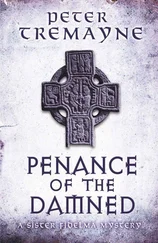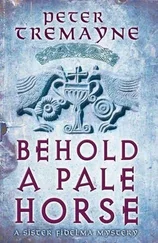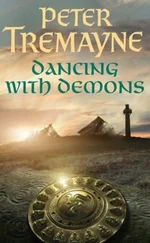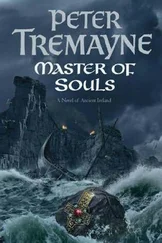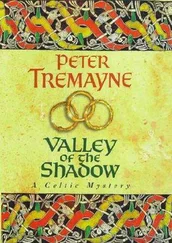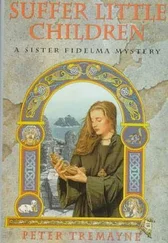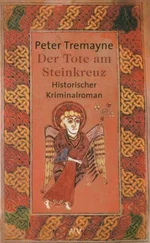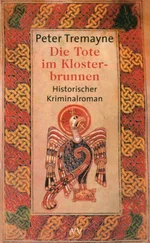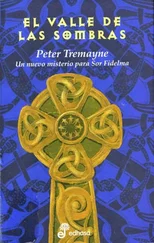Peter Tremayne - Hemlock at Vespers
Здесь есть возможность читать онлайн «Peter Tremayne - Hemlock at Vespers» весь текст электронной книги совершенно бесплатно (целиком полную версию без сокращений). В некоторых случаях можно слушать аудио, скачать через торрент в формате fb2 и присутствует краткое содержание. Жанр: Исторический детектив, на английском языке. Описание произведения, (предисловие) а так же отзывы посетителей доступны на портале библиотеки ЛибКат.
- Название:Hemlock at Vespers
- Автор:
- Жанр:
- Год:неизвестен
- ISBN:нет данных
- Рейтинг книги:4 / 5. Голосов: 1
-
Избранное:Добавить в избранное
- Отзывы:
-
Ваша оценка:
- 80
- 1
- 2
- 3
- 4
- 5
Hemlock at Vespers: краткое содержание, описание и аннотация
Предлагаем к чтению аннотацию, описание, краткое содержание или предисловие (зависит от того, что написал сам автор книги «Hemlock at Vespers»). Если вы не нашли необходимую информацию о книге — напишите в комментариях, мы постараемся отыскать её.
Hemlock at Vespers — читать онлайн бесплатно полную книгу (весь текст) целиком
Ниже представлен текст книги, разбитый по страницам. Система сохранения места последней прочитанной страницы, позволяет с удобством читать онлайн бесплатно книгу «Hemlock at Vespers», без необходимости каждый раз заново искать на чём Вы остановились. Поставьте закладку, и сможете в любой момент перейти на страницу, на которой закончили чтение.
Интервал:
Закладка:
“Some stones I was gathering to create a small rock garden,” she felt urged to explain. “I dislike clutter.” Abbess Ita bit her lip, hesitated and then shrugged, coming abruptly to the point.
“Were you in the refectory?”
“I was. I had just arrived at Kildare.”
“A problem has arisen which is of great concern to our community. Our guest, Sillán of Kilmantan, is dead. Our Sister-apothecary says he was poisoned.”
Sister Fidelma tried to conceal her astonishment.
“Poisoned? By accident?”
“That we do not know. The Sister-apothecary is now examining the food in the refectory hall. That was why I forbade our community to eat.”
Sister Fidelma frowned.
“Do I take it that this Sillán began to eat before you had finished the Gratias, Mother Abbess?” she asked. “You will recall that he cried in agony and collapsed while you were not yet finished.”
The Abbess’s eyes widened a little and then she nodded, agreeing with the point.
“Your perception justifies your reputation as a solver of mysteries, Fidelma. It is good that our community is served by one skilled in such matters and in the laws of the Brehons. Indeed, this is why I asked Sister Ethne to bring you here. I know you have just returned from your journey and that you are fatigued. But this is a matter of importance. I would like you to undertake the immediate inquiry into Sillán’s death. It is imperative that the matter be cleared up as quickly as possible.”
“Why so quickly, Mother Abbess?”
“Sillán was an important man. He was in this territory at the request of the Uí Failgi of Ráith Imgain.”
Sister Fidelma realized what this meant.
Kildare stood in the territory of the petty kingdom of the Uí Failgi. The royal residence of the kings of the Uí Failgi was situated at the fortress of Ráith Imgain, to the northwest of Kildare on the edge of the wasteland known as the Bog of Aillín. Several questions sprung into her mind but she bit her lip. They could be asked later. It was clear that the Abbess had no wish to incur the enmity of Congall, the petty king of the territory, who was known simply as the Uí Failgi, for, under the Brehon Law, the petty king and his assembly granted the land to the community of Kildare and they could just as easily drive the community out if displeased. All ecclesiastical lands were granted by the clan assemblies for there was no such thing as private property within the kingdom of Ireland. Land was apportioned and allotted at the decision of the assemblies which governed the tribes and kingdoms.
“Who was this man Sillán, Mother Abbess?” asked Sister Fi-delma. “Was he a representative of the Uí Failgi?”
It was Sister Ethne who volunteered the information, punctuating the sentences with sniffs.
“He was an uchadan, an artificer who worked in the mines of Kilmantan; so Follaman, who looks after our hostel, told me.”
“But what was he doing here?”
Did the Abbess cast a warning glance at Sister Ethne? Sister Fidelma caught only an involuntary movement of Sister Ethne’s eyes toward the Abbess and by the time Fidelma glanced in her direction the Abbess’s features were calm and without expression. Fidelma exhaled softly.
“Very well, Mother Abbess. I will undertake the inquiry. Do I have your complete authority to question all whom I would wish to?”
“My child, you are a dálaigh of the Brehon Court.” The Abbess smiled thinly. “You are an advocate qualified to the level of An-ruth. You do not need my authority under law. You have the authority of the Brehons.”
“But I need your permission and blessing as head of my community.”
“Then you have it. You may use the tech-screpta, the library chamber, to work in. Let me know when you have something to report. Go with God. Benedictus sit Deus in Donis Suis.”
Sister Fidelma genuflected.
“ Et sanctus in omnis operibus Suis,” she responded automatically.
Sister Ethne had placed two rough, unglazed earthenware lamps, their snouts fashioned to support a wick, to light the dark shadowy vault which was the tech-screpta, the great library of the community which housed all the books and treasures of the House of the Blessed Brigid. Sister Fidelma sat at the library table, in the chair usually occupied by the leabhar-coimdaech, the librarian who guarded the great works contained in the chamber. The treasure trove of manuscript books hung in rows in the finely worked leather book satchels around the great chamber. The tech-screpta of Kildare even boasted many ancient “rods of the fili,” wands of hazel and aspen on which Ogham script was carved from an age long before the scribes of Ireland had decided to adopt the Latin alphabet with which to record their learning.
The tech-screpta was chilly in spite of the permanent fire which was maintained there to stop dampness corroding the rows of books.
Sister Ethne, as steward of the community, had volunteered to aid Sister Fidelma by finding and bringing to her anyone she wished to examine. She sniffed as she endeavored to adjust the lamps to stop abrasive smoke and reeking tallow odor from permeating the library chamber.
“We will start by confirming the cause of Sillán’s death,” Sister Fidelma announced, once she had noticed that Sister Ethne had finished her self-appointed task. After a moment’s reflection she went on: “Ask the Sister-apothecary to join me here.”
Sister Poitigéir was nervous and birdlike in her movements, reminding Sister Fidelma of a crane, moving with a waddling ap-prehensiveness, now and then thrusting her head forward on her long neck in an abrupt jerking motion which seemed to threaten to throw the head forward off the neck altogether. But Sister — idelma had known the Sister-apothecary since she had joined the community at Kildare and knew, too, that her anxious idiosyncrasy disguised a keen and analytical mind when it came to the science of botany and chemistry.
“What killed Sillán of Kilmantan?”
Sister Poitigéir pursed her lips a moment, thrusting her head forward quickly and then drawing it back.
“ Conium maculatum,” she pronounced breathlessly.
“Poison hemlock?” Sister Fidelma drew her brows together.
“There was no questioning the convulsions and paralysis. He expired even as we carried him from the refectory hall. Also …” she hesitated.
“Also?” encouraged Sister Fidelma.
Sister Poitigéir bit her lower lip for a moment and then shrugged.
“I had noticed earlier this afternoon that a jar containing powdered leaves of the plant had been removed from my apothecary. They were there this morning but I noticed they were missing two hours before vespers. I meant to report the matter to the Mother Abbess after the service.”
“Why do you keep such a poison in your apothecary?”
“Properly administered, it can have good medicinal use as a sedative and anodyne. It serves all spasmodic affections. We not only have it in our apothecary but we grow it in our gardens which are tended by myself and Follaman. We grow many herbs. Hemlock can heal many ailments.”
“And yet it can kill. In ancient Greece we are told that it was given to criminals as a means of execution and among the Jews it was given to deaden the pain of those being stoned to death. I have heard it argued that when Our Lord hung upon the Cross He was given vinegar, myrrh and hemlock to ease His pain.”
Sister Poitigéir nodded several times in swift, jerky motions.
Sister Fidelma paused a moment or two.
“Was the poison administered in the food served in the refectory?”
“No.”
“You seem positive,” Sister Fidelma observed with some interest.
Читать дальшеИнтервал:
Закладка:
Похожие книги на «Hemlock at Vespers»
Представляем Вашему вниманию похожие книги на «Hemlock at Vespers» списком для выбора. Мы отобрали схожую по названию и смыслу литературу в надежде предоставить читателям больше вариантов отыскать новые, интересные, ещё непрочитанные произведения.
Обсуждение, отзывы о книге «Hemlock at Vespers» и просто собственные мнения читателей. Оставьте ваши комментарии, напишите, что Вы думаете о произведении, его смысле или главных героях. Укажите что конкретно понравилось, а что нет, и почему Вы так считаете.

